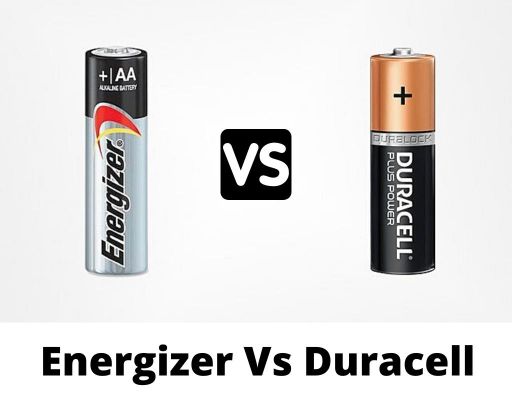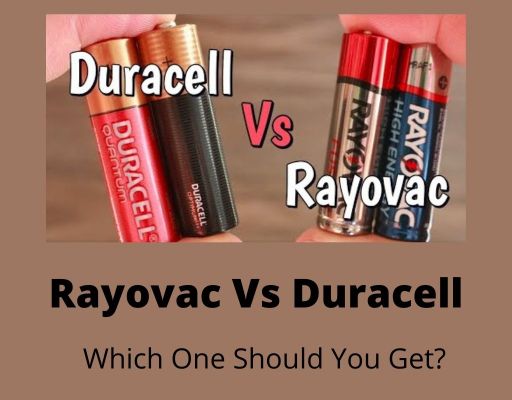Our topic for today is the differences between a group 35 battery and a group 35N battery.
Unlike batteries with different group numbers, these two batteries have the exact same dimensions. However, the variance comes in the form of capacity, performance, the presence of a post, etc.
In this article, I will provide you with the details of how a group 35 battery is different from a group 35N battery. As well as the performance criteria of a battery group 35 vs 35N.
Battery Group 35 Vs 35N: Quick Comparison Table
There are several key differences between a group 35 battery and a group 35N battery.
| Differences | Group 35 Battery | Group 35N Battery |
| Dimensions (Inches) (L x W x H) | 7.20 x 6.40 x 9.04 | 9.60 x 6.90 x 9.11 |
| Weight | Slightly Heavier (39.2 lbs.) | Slightly Lighter (38.2 lbs.) |
| CCA Range (Cold Cranking Amps) | 525 | 640 |
| Best Used for | These batteries are often used in other applications such as; UPS, wheelchair batteries, security system backup batteries, medical applications, off-the-grid, etc. | Specifically designed to deal with colder climates and hence the greater CCA range. |
| Similar Battery Groups | Group 25 Batteries Group 86 Batteries | Group 22HF Batteries |
| Cost | $140 – $160 | $120 |
| Durability (Years) | 7 – 10 | 2 – 5 |
These are some of the key differential features that separate a group 35 battery from a group 35N battery. I will further explain these features in the segment below.
What Are the Differences Between a Battery Group 35 and 35N?
The table in the above segment shows the key differences between a group 35 battery and a group 35N battery. However, for further explanation, I will brief on these features below.
Dimensions
The dimensions of both of these batteries can be seen in the chart provided above. A group 35 battery is significantly smaller than a group 35N battery.
And since a group 35N battery is bigger than a group 35 battery, it has the potential to support a higher capacity of power than a group 35 battery.
However, it will depend entirely on which battery brand and model you choose.
But you must make sure the battery will fit into the battery compartment of your vehicle. It will not matter how good the battery is unless you can use it.
Weight
When it comes to differences in weight between a group 35 battery and a group 35N battery, there isn’t a huge difference. They average around the same weight with a smaller gap, where a group 35 battery takes the lead.
This means that weight isn’t a major issue between these two battery types. And you can choose either of these group sizes without taking weight into consideration.
CCA Range (Cold Cranking Amps)
Group 35N batteries tend to have a higher average rating for cold-cranking amps. Clocking in at around 640 amps on average.
However, the average CCA range is around 525 for group 35 batteries, but some may exceed that.
So technically, even though a group 35N battery will provide you with a greater Cold Cranking Amps range, some group 35 batteries may provide you with better.
Best Used for
Group 35 batteries can be used quite flexibly than a group 35N battery. Other uses for these batteries include UPS, wheelchair batteries, security system backup batteries, medical applications, off-the-grid, and so on. Meaning that they may serve other purposes as well.
On the other hand, group 35N batteries tend to be built specifically for colder areas, which results in a wider CCA range.
It comes down to user requirement and preference to choose which feature is more crucial to him/her.
Similar Battery Groups
Group 35 batteries tend to be similar to group 25 and group 86 batteries.
But group 35N batteries tend to be similar to group 22HF batteries.
Cost
Group 35 batteries tend to be costlier than group 35N batteries.
So, if you want a budget-friendly option, group 35N should be your choice.
Durability
In terms of durability and longevity, group size 35 batteries leave the group 35N batteries biting the dust.
Users have reported using a group 35 battery for well over 10+ years. The same cannot be said for a group 35N battery.
Group 35 or Group 35N? Which Should You Choose?
Sincere to say, a lot of it depends on the users’ preferences and the size of the battery compartment of the car. I will brief more on the subject below.
You can select either of them if they appear to satisfy the electrical needs of your car and your battery compartment has enough room for a battery of either group size.
However, if you wish to use the battery for other purposes apart from using it in your vehicle, a group 35 battery will serve you better. As they have superior flexibility of use than a group 35N battery.
That being said, you might want to choose a battery with a higher CCA (cold cranking amps) rating if you reside in a colder area with severe weather. because it will make it easier for you to start your vehicle.
But if not, you may wish to opt for a group 35 battery. As these are pretty easy to find. Group 35N batteries seem to be very rare and often tend to be out of stock.
Battery Group 35 and 35n: My Suggestions
As a buyer, you may feel overwhelmed with which battery to choose from, as there is a huge list of available batteries. So, I’ll provide you with a suggestion.
Group 35 Battery:
Optima RedTop 8020-165 SLI Starting Battery
– Reserve capacity of 90 minutes for constant performance.
– Optimal starting power even in bad weather.
– Case material is Polypropylene.
Delphi BU9035 MaxStart AGM Battery
– Superior corrosion resistance sealed housing.
– Extended cold-cranking amps delivery means more power.
Group 35N Battery:
EverStart Maxx Lead Acid Automotive Battery
– Durable and reliable battery option for a wide variety of vehicles.
– Maximum starting power provided.
Frequently Asked Questions (FAQs):
u003cstrongu003eDoes group 35N batteries always provide a greater CCA range than group 35 batteries?u003c/strongu003e
Not really. Some group 35 batteries will have a higher CCA range than some 35N batteries.
u003cstrongu003eAre group 35N batteries maintenance-free?u003c/strongu003e
Yes, you do not need to add acid or water to the battery after a specific period or whatsoever.
u003cstrongu003eHow can weather affect the battery?u003c/strongu003e
Extreme heat can cause the water within a battery to evaporate, which is the leading cause of battery failure.
Summary
I’ve explored the differences between the battery group 35 vs 35n throughout this entire article, so that you may make an informed decision about which battery size to use.
It is critical to evaluate the battery group when selecting a replacement. You might lose a lot of money if you make bad decisions. Understanding the variations between various battery sizes is hence so critical.


